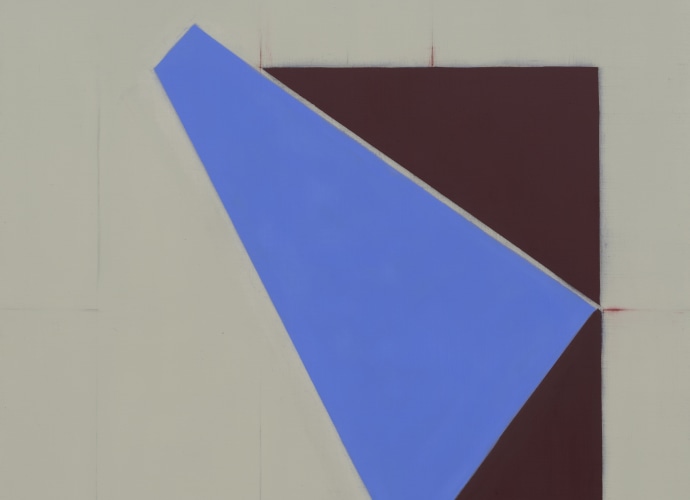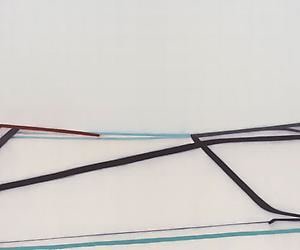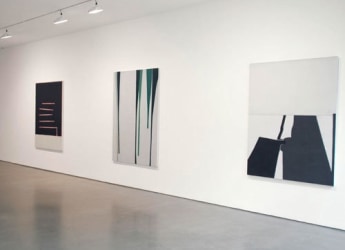
Suzanne Caporael
The Memory Store
Art in America, March 2011

Road trips are never really how you remember them. So many interstitial moments—of abject boredom, blurred roadbeds and pit stops—are lost to memory or replaced by the seemingly more important aggregate moments frozen in photographs. If what you’re after is to record the perhaps truer, more internal impressions of a journey, writing would seem a better medium. That said, if Suzanne Caporael’s engaging show was any indication, easel painting can trump both camera and pen.
New York-based Caporael is an inveterate road tripper (having covered some 30,000 miles in her lifetime), and she used her most recent cross-country excursion as the basis for the 12 paintings on display here (all 2009 or ’10). Despite their highly abstract forms, the canvases, some of them fairly substantial in scale (the largest are 60 inches tall) and many with thickly painted surfaces, manage to convey Caporael’s journeys in a way that feels as fresh and honest as a lap-held diary.
Caporael takes a less-is-more approach to her compositions, distilling events into a shorthand of simple lines and strokes, and letting her titles—590 (Shelby, Montana); 592 (Sugarcreek, Ohio), etc.—as well as brief travel notes on the checklist, do the talking, affording us hints of time and place. One of the best and most highly abstracted images in the show, 617 (Clarksville, Tennessee), features five straight lines, suffused with a gentle pink glow, marching down the center of a deep alizarin crimson ground. The lowest line makes a right angle that meets the broad bottom border, painted white. “Each night Bruce steps into darkness to find us food,” the artist writes in the entry accompanying the painting. “This time he returned with pulled pork.” Is that bottom line on the canvas indicative of Bruce’s “step”? Nothing quite so literal at work here, but Caporael’s softened geometries are just specific enough—and evocative enough—to keep us wondering.
613 (Wagner, South Dakota) is a low-horizoned abstract vista sporting large stretches of empty white. Its lines, with their shifts of width and idiosyncratically sudden switchbacks, bespeak the specificity of map markings or perhaps paths limned from memory. And two bulky black forms meet at an oddly shaped juncture in the bottom half of 598 (Woosung, Illinois), while two narrow, thinner bands sprout from their sides. Caporael’s text tells us that Woosung used to be “a transportation hub, with fine roads and a railroad stop,” but that today, well past its prime, there are roads “so patched they appear to be made solely of patches, resistant to the idea of travel.” Look closely and you’ll note that one narrow band rises a scant one inch above the even narrower horizon, a small defiant foray into a white, barren sky. -Sarah Schmerler, Art in America, March 2011


